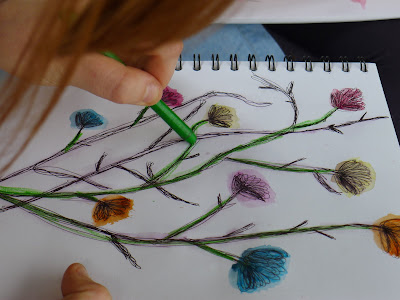
On 2nd November 2011 the Longley Park Sixth Form students returned to the LEAF allotments to celebrate the success of the project. Rob Barker from Longley Park came with the students, Diane of LEAF was there of course, Sally from Persistence Works Metal program came along, Ruthie led the day and some of the LEAF participants joined in too.
Ruthie took the students around the allotment site and we all talked about how the plots had changed since May. We talked to some students from the Sheffield University School of Architecture who were busy completing the build of an experimental composting toilet for the site as part of their uni live project. A few of the Longley Park students were interested in pursuing a degree in architecture so had the opportunity to ask first hand questions.
Diane had arranged for some apples to be delivered to the site from the group Abundance who harvest unpicked fruit trees around Sheffield. The students then had the chance to use the LEAF apple press to press the apples for fresh juice. First the apples had to be ground up to make them easier to press:




A jug and a half of juice was produced from one batch of apples. Then it was the girls turn!


Once the juice was ready we sat down to eat Butternut Squash, Ginger and Coconut Soup that Ruthie had made. We decided not to use the bowls and spoons just yet as they will be being exhibited in the new Parson Cross Knutton Road studios during December. We also drank the fresh juice.


We talked about how the project had gone. Looked at the finished bowls and compared results. Sally demonstrated how to polish the silver spoons to keep them in good condition. We talked about how college was going for the students and where they are applying to go to uni. The was a very friendly atmosphere between everyone in the group and the general consensus was that the project had been a real success.




Then the pressing started. This was harder than it looked. The boys went first and there was much heckling from the girls!


A jug and a half of juice was produced from one batch of apples. Then it was the girls turn!


Once the juice was ready we sat down to eat Butternut Squash, Ginger and Coconut Soup that Ruthie had made. We decided not to use the bowls and spoons just yet as they will be being exhibited in the new Parson Cross Knutton Road studios during December. We also drank the fresh juice.


We talked about how the project had gone. Looked at the finished bowls and compared results. Sally demonstrated how to polish the silver spoons to keep them in good condition. We talked about how college was going for the students and where they are applying to go to uni. The was a very friendly atmosphere between everyone in the group and the general consensus was that the project had been a real success.


Recipe for Butternut Squash, Ginger and Coconut Soup...
To serve 4-6 people
1 medium butternut squash
3 carrots
1 potato
2 leeks
1 large onion
4-6 cloves of garlic
Ginger about the size of 2 thumbs!
1 can of coconut milk
A little butter
1 vegetable stock cube
Boiling water
Salt and pepper to taste
Chop up the onions, garlic and leeks and add them with the butter to a large pan on a medium heat. Finely chop the ginger and add this too. Cover and wait until everything has softened.
Now add the butternut squash, carrots and potato cubed. Add the stock cube and boiling water until everything is covered. Add salt and pepper, stir everything and then cover, allow to simmer.
Once the squash, carrots and potato have softened (about 20-30 mins) add the coconut milk and stir. Simmer for another 10 minutes.
The soup is best blended if you have a blender or hand blender. If not you can use a potato masher or fork which will give you slightly less smooth but just as tasty soup.
Serve with crusty bread and butter or on its own. Enjoy!







































































